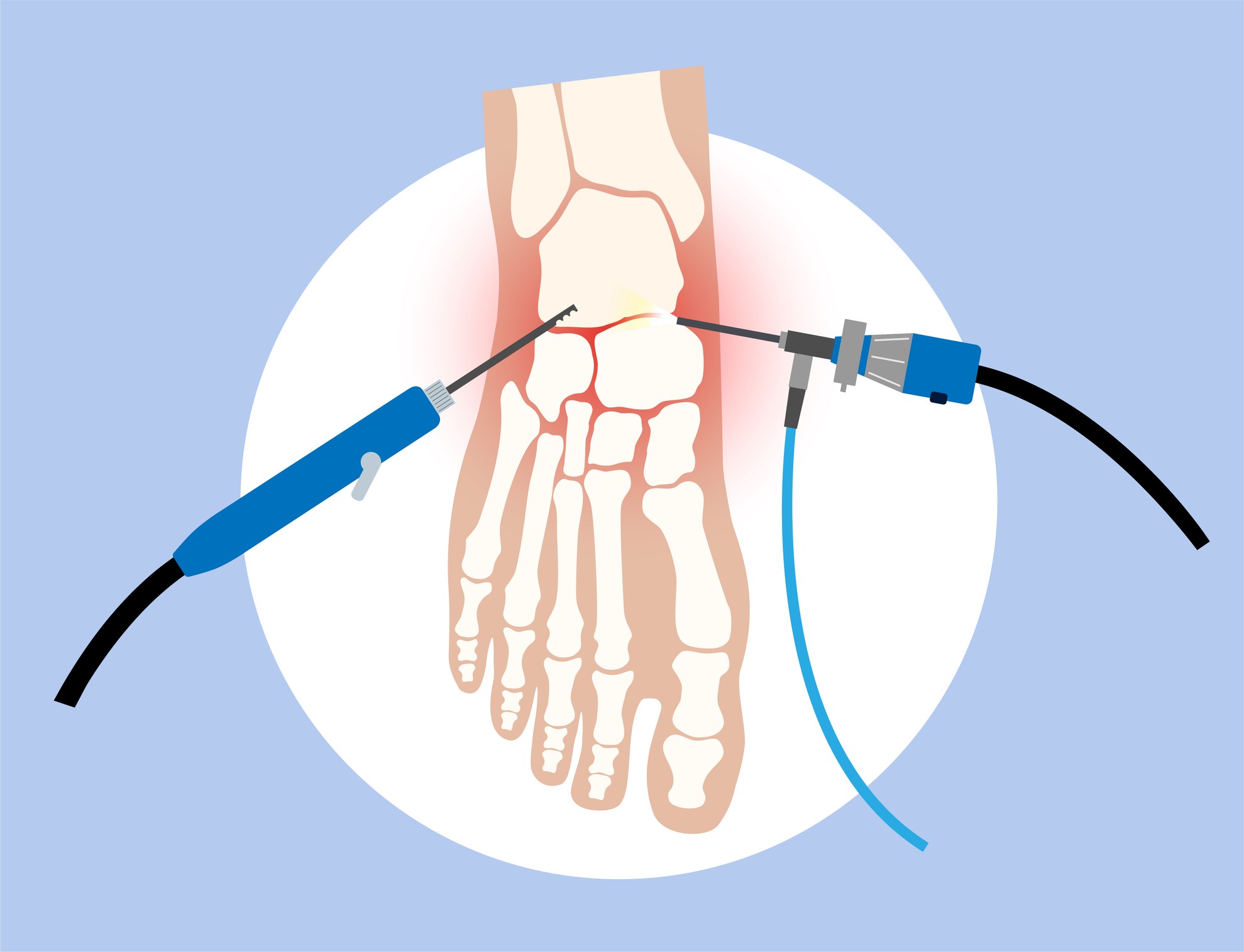Ankle Replacement Surgery
Ankle replacement surgery, also known as ankle arthroplasty, is a procedure where the damaged parts of the ankle joint are replaced with artificial components to relieve pain and restore function. This surgery is typically recommended for individuals with severe arthritis in the ankle joint.

Why Might I Need Ankle Replacement Surgery?
You might need ankle replacement surgery if you suffer from severe arthritis in your ankle, causing significant pain, inflammation, and stiffness, which can lead to difficulty walking.
For mild or moderate arthritis, other treatments such as pain medications, physical therapy, special shoe inserts, or corticosteroid injections are usually recommended. If these treatments do not alleviate the symptoms, and they interfere with daily activities, ankle replacement surgery or another surgical procedure may be suggested.
Risks of Ankle Replacement Surgery
- Ankle replacement surgery is generally successful but comes with potential risks, including:
- Infection
- Nerve damage
- Bleeding
- Blood clots
- Bone misalignment
- New arthritis in adjacent joints
- Loosening or wear of the artificial components
Factors like smoking, low bone density, and medical conditions such as diabetes can increase the risk of complications.


Preparing for Ankle Replacement Surgery
To prepare for the surgery:
- Discuss with your healthcare provider any medications you are taking.
- Quit smoking to reduce the risk of complications.
- Arrange for someone to drive you home and assist you during recovery.
- Avoid food and drink after midnight before the procedure.
Conditions Where Elbow Arthroscopy Is Needed
What Happens During Ankle Replacement Surgery?
During the surgery (which takes a few hours)
- You may be given general or regional anesthesia.
- The surgeon will make an incision in the skin and muscle of your ankle.
- The damaged parts of the tibia and talus are removed.
- New metal components are attached to the remaining bone, with a plastic piece inserted between them to allow smooth movement.
- The incision is closed with sutures, and the ankle is immobilized.
Recovery After Ankle Replacement Surgery
Post-surgery, you will need to:
- Keep the leg elevated to reduce swelling.
- Wear a splint or boot and use crutches for several weeks.
- Follow a physical therapy regimen to regain strength and mobility.
- Avoid putting full weight on your foot for a few months.
You will have follow-up appointments to monitor your recovery, and it may take several months to return to full activity.
Frequently Asked Questions
How long before you can walk after ankle replacement?
- Most patients start walking with a protective boot at four weeks post-surgery and in regular shoes at eight weeks.
How successful is ankle replacement surgery?
- Ankle replacement surgery is generally successful in alleviating pain and preserving joint motion. Follow-up care is crucial to monitor and manage potential complications.
What is the recovery time for an ankle replacement?
- Full recovery can take up to a year, with significant improvement usually seen by six months.
Will I need someone to help me manage at home after ankle replacement?
- Assistance is recommended during the first two weeks, as you cannot bear weight on your foot.
What physical limitations will I have after ankle replacement?
- Activities like running or jumping should be avoided, but you can walk, hike, and engage in other low-impact activities.
By following your healthcare provider’s instructions and attending all follow-up appointments, you can enhance your recovery and return to your daily activities with reduced pain and improved ankle function.
Find a Doctor
Hear What Our Patients Have to Say


Had my right hip replaced by Dr Jeffrey, and couldn't be happier with the job he did and the treatment I received. Been a few years and went in for a yearly checkup and everything is great! Great doctor and office staff!

My two partial knee replacements changed my life. I feel very respected and cared for at this practice. Everyone is very professional and explains things very conscientiously.

He was very nice explained everything and showed pictures of what he wants to do with my right knee felt comfortable with him and he has a great smile.

Dr. Acker is a very good listener and very [accommodating] to my requests. Very understand[ing] and puts my mind at ease for my upcoming knee replacement.

Dr Anna Babushkina is a miracle worker. She repaired nerves, a ligament and tendon in my fingers after a dog bite. She stitched me up so nicely and made my hand look like a hand again.

